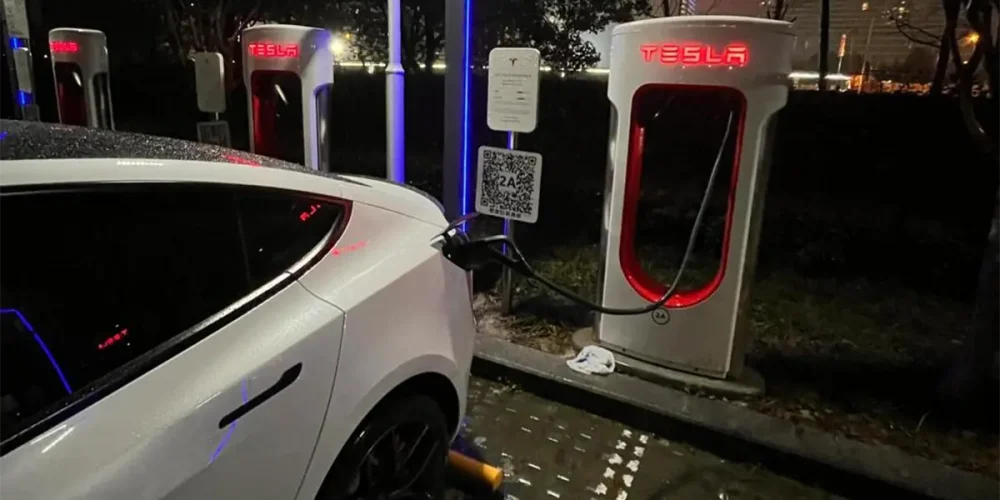
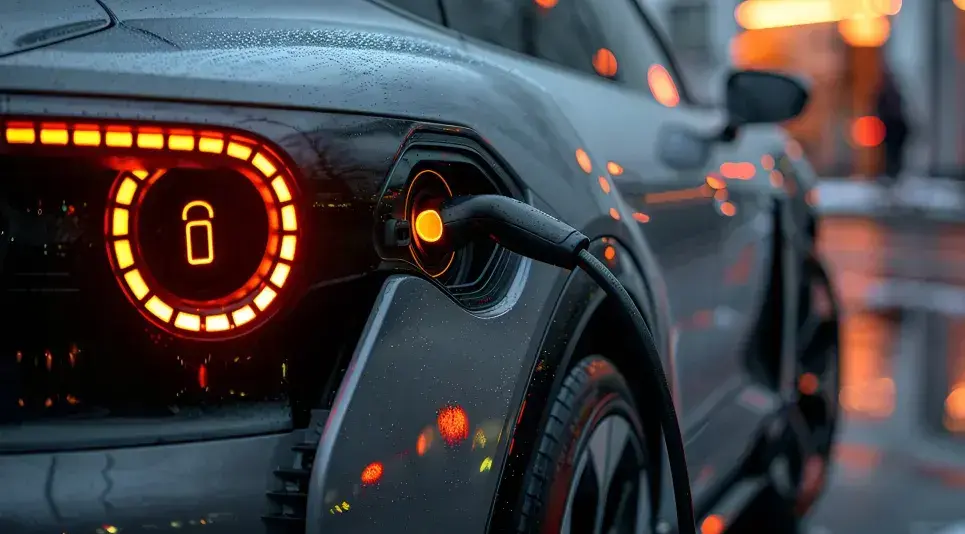
We’ve been taught since we were kids that water and electricity do not mix. It’s a deeply ingrained fear. And that’s the reason people often ask this question.
Is it safe to charge EV in the rain?
The straight answer. Yes, it is. charging your EV in the rain is a standard operation your car was explicitly designed for. But there are still a few things you’d do well to watch out for.
So let’s get into the details…
Why We Worry (But Honestly Shouldn’t)
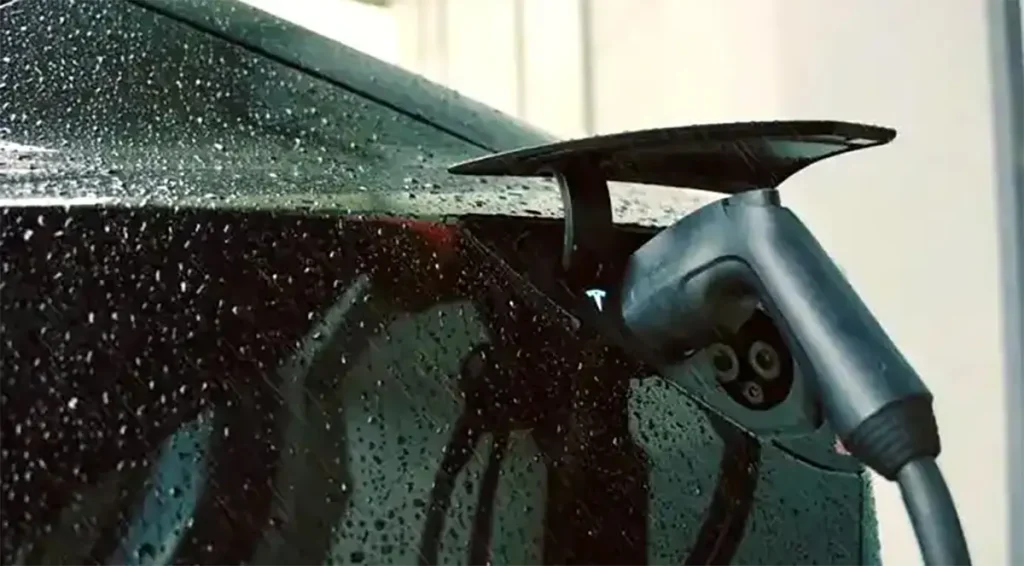
It’s perfectly natural to hesitate. For decades, we’ve known that if you drop a toaster in the bathtub, it’s game over. We instinctively apply that same logic to our cars. You would not use a hairdryer in the shower, would you?
The key difference here is intent. Household appliances are designed for dry, indoor environments. Their electrical components are often exposed or lightly shielded because the assumption is they’ll never see a drop of water.
Electric vehicles, on the other hand, are designed from day one to live outside. They have to survive scorching heat, freezing cold, snow, ice, and yes, torrential downpours.
Thinking that an EV can’t be charged in the rain is a bit like thinking a submarine can’t get wet. The entire system, from the grid connection to the battery pack, is built with water ingress as a primary design constraint. It’s not an afterthought; it’s a core requirement.
The Engineering: How Your EV is Waterproofed

To understand why you do not need to worry, we need to talk about Ingress Protection, or IP ratings. In layman’s terms, an IP rating is a standardized score that tells you exactly how good a device is at keeping stuff out—specifically, dust (the first digit) and water (the second digit).
Most EV charging components, including the charge port on your car and the connector on the cable, are rated at least IP54 or IP55 when they are plugged in. Many are rated even higher, often IP67.
What does that actually mean?
● IP55: Protected against dust and low-pressure water jets from any direction. Translation: Rain is no problem at all.
● IP67: Completely dust-tight and can be temporarily submerged in water up to a meter deep. Translation: You could probably drop the connector in a puddle (though we would not recommend it) and it would still be fine.
The engineering goes beyond just seals and gaskets.
Take the charging port on your vehicle. It’s not just a hole in the side of the car. It’s designed with specific drainage channels. Any water that gets into the outer housing area is immediately directed away from the electrical contacts and drained harmlessly out the bottom of the port assembly.
Speaking of the contacts, have you ever looked closely at the plug? The vital pins—the ones that actually carry the high-voltage current—are recessed deep inside the plastic housing. They are not just sitting there on the surface.
This physical design means that even in heavy, driving rain, it’s almost impossible for enough water to get deep enough into the connector to create a short circuit between those pins. The water just cannot bridge that gap.
The “Smart Handshake”: Why You Won’t Get Shocked
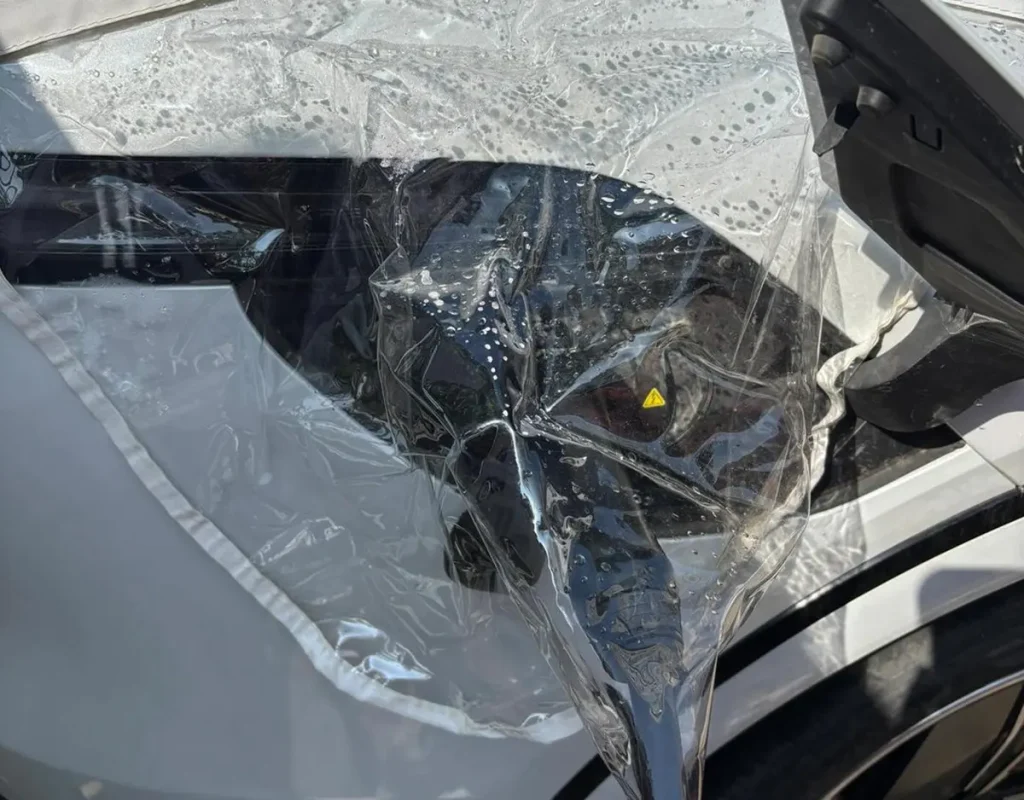
Physical waterproofing is great, but it’s only the first line of defense. The real magic happens in the software.
We’d argue this is the most important part to understand. When you pick up a charging cable, it is, for all intents and purposes, “dead.” There is no high-voltage electricity flowing through those big pins. You could (theoretically—please do not actually do this) stand in a puddle and hold the connector in the rain, and nothing would happen.
The power does not start flowing until the “smart handshake” is complete.
Here’s how it works:
- Connection: You plug the connector into your car. You’ll usually hear a mechanical click as it locks into place.
- The Pilot Signal: The charging station (EVSE) sends a low-voltage “pilot” signal to the car. This is basically the charger asking, “Are you there? Are you ready?”
- Safety Checks: The car and charger then run a near-instantaneous series of checks. They confirm the cable is fully inserted, physically locked, and that there are no ground faults (more on that in a second). They also check connection resistance. If there’s water in the plug causing issues, the resistance will be wrong, and the process stops right there.
- Energizing: Only after all these checks pass. And we’re talking milliseconds here. Does the car close its internal contactors and tell the charger to open the floodgates. Only then does high-voltage power flow.
If at any point during the charging session something changes—someone unplugs the cable, or water somehow manages to get in and cause a tiny fault—the system detects it instantly and cuts the power.
It’s a failsafe system. The default state is “off,” and it actively has to work to turn “on.”
Does the Charger Matter? (Reliability & Real-World Safety)
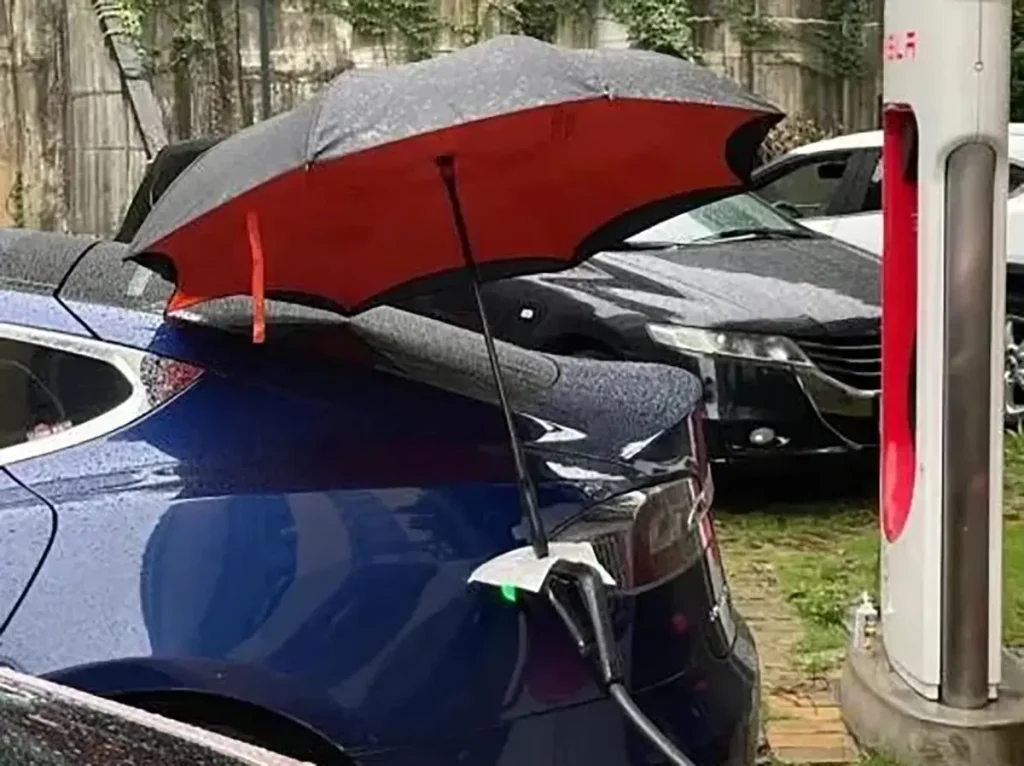
All of this clever engineering relies on the equipment working exactly as it should. The car is usually fine, automotive standards are incredibly high.
Where things can get a little murky is with the charger itself, specifically third-party ones. While every charger sold should meet these safety standards, the reality is that build quality varies.
A cheap, poorly sealed unit might have an IP rating on the box, but will it actually hold up after a year of being tossed in the trunk and used in the rain?
This is where we’d argue it’s well worth investing in known reliability. You want a unit that does not just meet the bare minimum standards but exceeds them.
Take our own chargers here at Duevolt, for example. We do not just aim to meet the standard; we build in advanced safety features as a baseline. We’re talking about specific overvoltage, overcurrent, and overheating protections that are crucial when charging conditions are not perfect. Having that robust short-circuit protection makes them a genuinely dependable choice for your daily needs, rather than just a backup cable you hope works when it’s wet out.
When it’s pouring rain and you’re plugging 240 volts into your car, you really don’t want to be second-guessing the quality of the gear you’re using. You want to know that those internal GFCIs (Ground Fault Circuit Interrupters) are high-quality and will trip the instant they detect even a micro-amp of current leaking where it shouldn’t.
On the whole, sticking with reputable gear is just common sense.
When to Actually Avoid Charging EV in The Rain
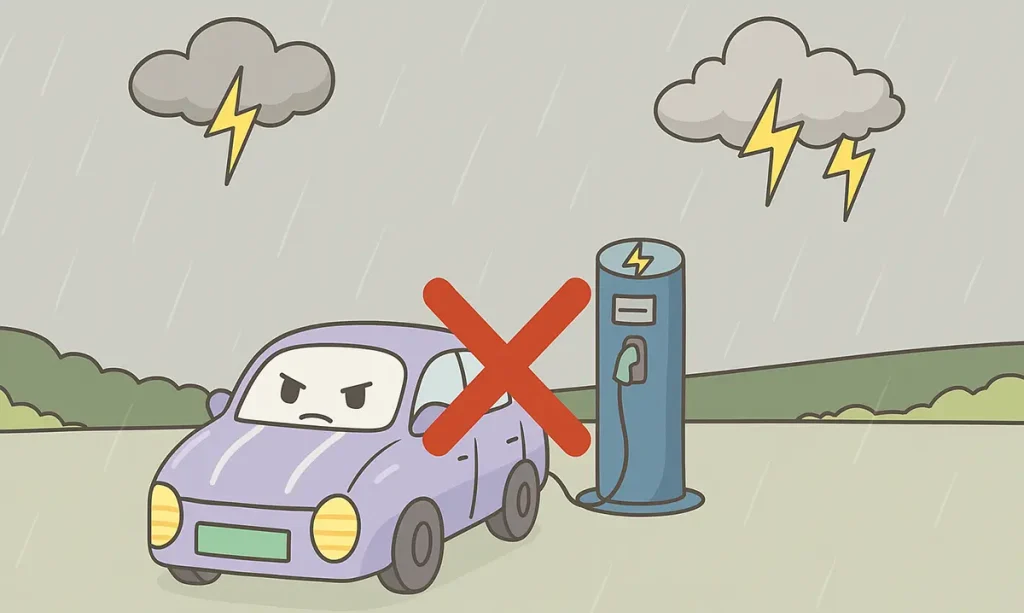
Okay, so we’ve established that rain is fine. Snow is fine. Is there ever a time you should not charge?
Honestly, yes. There are a few extreme edge cases where standard safety rules apply.
● Flooding: This is the big one. While the connectors are water-resistant, they are not designed to be operated while underwater. If you’re standing in six inches of water, or if the charging station itself is submerged, don’t touch it. That’s a generic electrical safety rule, not just an EV one.
● Lightning: Active, severe thunderstorms pose a risk to anything plugged into the grid. Your car will likely be fine, it has surge protection, but a direct lightning strike to a nearby pole could overwhelm the surge protectors in your house or the charging station. If it’s a truly apocalyptic storm, maybe wait an hour.
● Damaged Equipment: If you run over your charging cable and crack the handle, all those IP ratings we talked about earlier go out the window. Never use visibly damaged equipment in the rain (or ever, really).
In Closing
To sum up, the fear of charging EV in the rain is a holdover from a different era of technology. It does not apply here.
Your EV was tested in conditions far worse than the rainstorm you’re currently standing in.
Between the physical waterproofing of the connectors and the sophisticated electronic handshake that happens before a single volt flows, you are incredibly well-protected.
So next time you need a charge and the weather is miserable, don’t worry about it.
Just plug in, dash back inside, and stay dry. The car can handle it. And if you want that extra peace of mind, checking out Duevolt EV Charger line-up might just be the upgrade your rainy days need.
